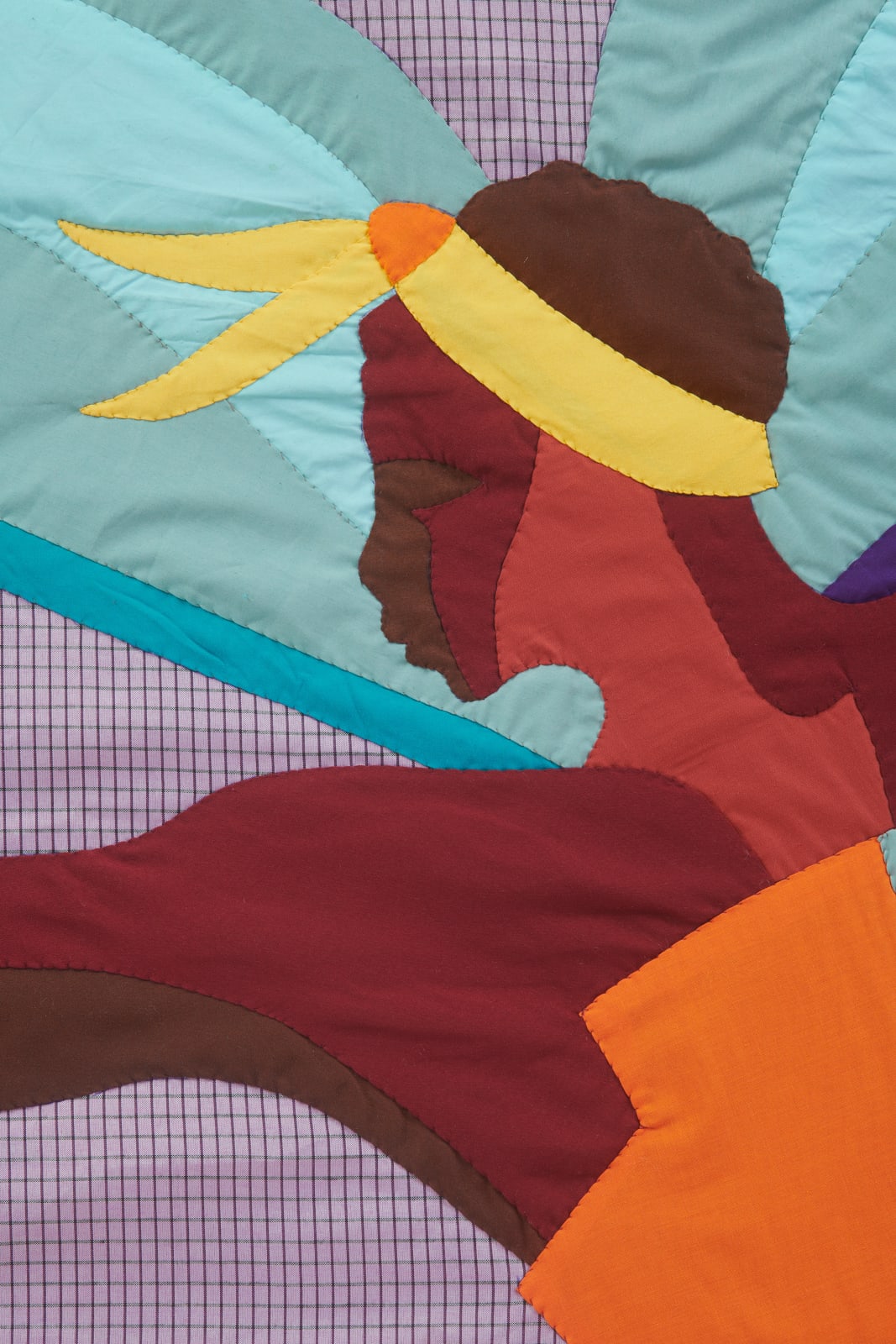-
Artworks




Sibyl, 2022
Appliqué textile80 1/2 x 58 in.
204.5 x 147.3 cmSoldFurther images
Sibyls were seers, often women, who practiced augury and future sight. There is a long tradition in Western art history of depicting these sibyls as Black women. In this image,...Sibyls were seers, often women, who practiced augury and future sight. There is a long tradition in Western art history of depicting these sibyls as Black women. In this image, Myers borrows directly from the pose of the Libyan Sibyl depicted in Michelangelo's Sistine Chapel fresco, rewriting her within another post-African context.
The institution of American Slavery, and the resistance movements against it, were built around a contest of languages and storytelling. The invocation of myth to justify or to condemn the practice of chattel bondage was commonplace. One way that this mythological weight was acknowledged was in the naming of enslaved people. In "The Confessions of Nat Turner"–not the controversial book by William Styron but the source text upon which he based his book–there are mentions of enslaved individuals named Venus and Prince. Another mention describes an enslaved young woman as a sibyl. Here, Myers depicts an African-American sibyl, herself an augury of Turner’s visionary resistance.







